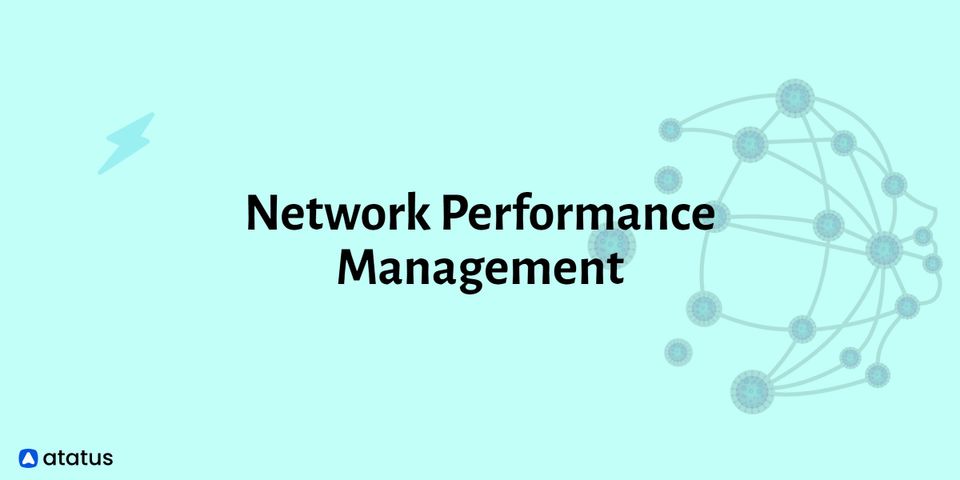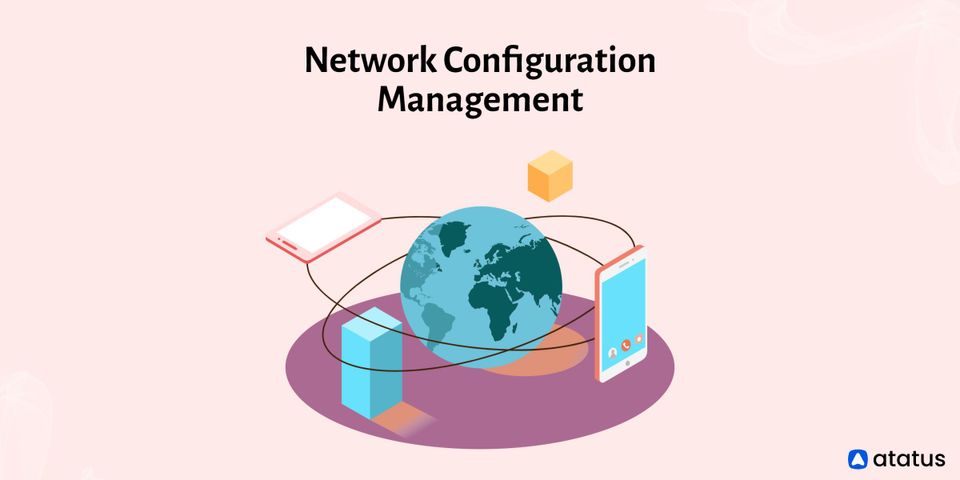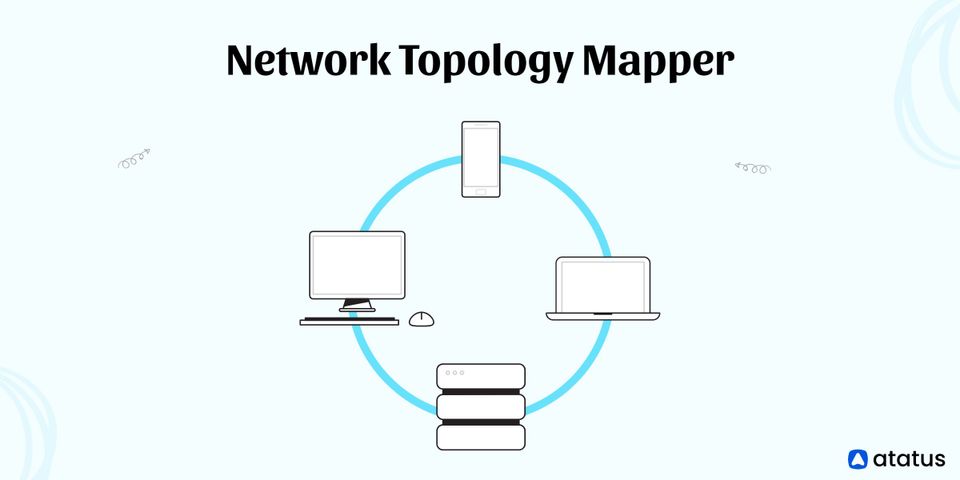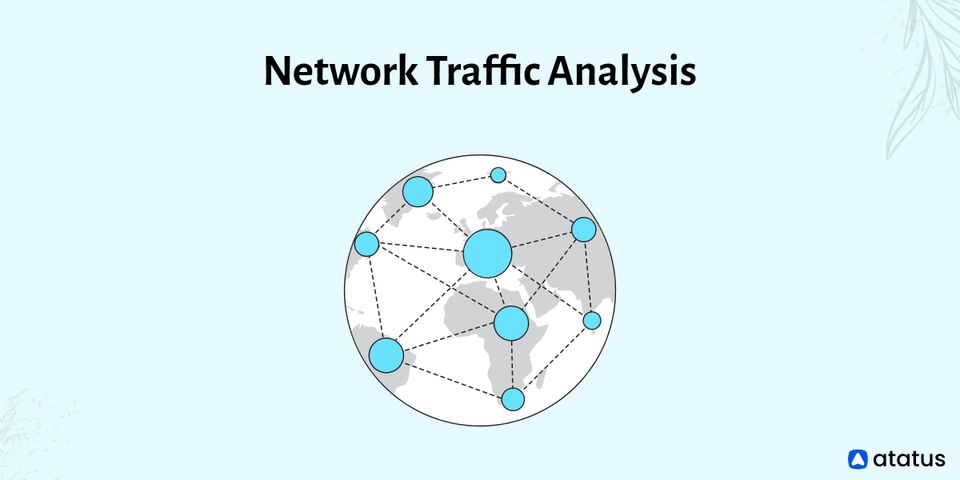The need for network performance monitors has been pushed by businesses with high dependability requirements. Any type of network outage can be disastrous for a company.
Productivity loss, a negative consumer experience and satisfaction, and a loss of profit are all possible consequences. Such disruptions might be a competitive disadvantage in today's highly competitive business world.
Network performance management provides end-to-end visibility and actionable insights, allowing IT to proactively address network-based performance issues and ensuring that digital assets perform consistently and properly.
We will go over the following:
- What is Network Performance Management (NPM)?
- Elements of Network Performance Management
- Strategy for Network Performance Management
- Why is Network Performance Management (NPM) Important?
- Network Performance Management vs. Network Performance Monitoring
What is Network Performance Management (NPM)?
Network Performance Management (NPM) is a set of techniques for managing, enabling, and ensuring that a computer network runs at its best. Routine monitoring of quality and performance service levels for each network component and the device is typical of network performance management.
Since it is more complicated than ever before, modern IT infrastructure requires the actionable insights provided by end-to-end visibility. To increase productivity, improve network speed, and provide a better user experience, networks incorporate a variety of components.
Given that technological stacks have both grown into third-party SaaS applications and increased in density locally, maintaining this degree of full visibility is a task. Without granular network performance management tools, pinpointing the catalyst of the resulting problems over such a wide swath of components can be difficult or impossible.
In general, network performance management examines granular performance information from across the network. NPM, for example, examines and monitors router performance at each port.
NPM analyses the performance metrics of each network infrastructure component to identify and prevent problems linked to internal functions.
IT teams can proactively repair network-based performance issues by identifying potential causes of outages before they generate a negative user experience by monitoring performance data or logs in real-time. One of the advantages of NPM is the increased insight and improved performance it provides.
Elements of Network Performance Management
The following are some of the elements of a network performance management architecture.
- Big Data, Cloud
Integrates with an analytics platform as well as cloud providers' flow monitoring to provide end-to-end, consolidated data visibility of data flow into the cloud from the enterprise network. - Closed-Loop Automation
Self-healing is enabled via closed-loop automation, which has built-in intelligence that matches prospective problems with potential recovery possibilities. This automates the entire data gathering and monitoring process, as well as data processing, remediation, and storage. - Flow-Based Monitoring
Flow-based monitoring improves visibility into traffic going through the network even when businesses utilise traditional ways for collecting application flow from the underlying network. - Intelligent Visualization
Intelligent visualisation provides insight into independent solutions and tools, the ability to manage network and application performance and tools in one location, and insightful visualisation of network data acquired from applications. - Multiple Domains
NPM measurements from all available domains, including traditional IT infrastructures such as applications, network, and voice/video, are consolidated by a smarter application, device, and network monitoring architecture. With the rise of cloud usage and software-defined networks, having a comprehensive picture of the complete IT infrastructure is becoming increasingly vital. - NPM/APM Platform Convergence
Administrators may get a comprehensive view of their network by combining measurements and data from network application performance management and network performance monitoring. This enables quicker troubleshooting and improved visibility. - Programmability
Customization is made possible by using open APIs to connect multiple components for upstream and downstream communication, as well as data analysis and sharing.
Strategy for Network Performance Management
Network Performance Management (NPM) comprises creating a network operations strategy, policies, and procedures aimed at preventing, mitigating, and resolving network performance problems.
NPM software suppliers and protocols should be chosen based on a company's specific needs, however, there are a few NPM best strategies that can help improve IT operations while minimising the risk of problems.
High-Quality Data
Effective NPM requires the review of relevant performance metrics. Sifting through the vast amount of data generated by a complicated network is difficult.
By monitoring data on bandwidth utilisation, network node outages, network traffic analysis, packet loss, and SNMP performance, network performance management tools help to streamline the process. They then forward pertinent data to IT for examination, or they use artificial intelligence/AIOps or machine learning to examine the data.
Analyze NMP Metrics
Because there are so many various components involved in keeping any network working, effective network monitoring solutions may provide a variety of performance metrics that provide data about the health of the IT stack.
With a more comprehensive perspective into a multi-layered network, it's easier to discover troublesome regions for performance, but it's just as vital to know which specific metrics provide the right information. Improve user experience and productivity while mitigating difficulties with more precisely designed network management rules with the correct data in hand.
Automatically Collect Data
Because identifying a pattern of performance issues can take time, automatic data collection is vital. All performance concerns, as well as the circumstances surrounding each problem, are logged by effective network performance management software. By referring to a log of previous concerns, the IT team is better equipped to determine which issues require closer monitoring or more in-depth examination.
Identify Potential Security Risks
Malware and other security risks are frequently the sources of poor network performance, and they can swiftly mean disaster for the network and the company. Unsecured network devices, malware, and other network vulnerabilities should all be detectable by an NPM system. This enables IT to develop network issues and performance management to manage and prevent issues before they cause harm to confidential data or end-users.
Why is Network Performance Management (NPM) Important?
Modern IT infrastructure is more complicated than ever before, with a diverse set of components that work together to boost network speed, boost productivity, and provide a favourable user experience. Locally, technology stacks have grown in density while also growing into third-party SaaS applications, making total visibility difficult to maintain.
When one component fails, the consequences can be far-reaching, and the cause of the resulting problems might be difficult to detect across such a large number of moving parts.
In order to address internal issues, network management requires evaluating the performance parameters of each component of network infrastructure. IT teams can detect the core cause of issues before they result in outages or a terrible user experience by monitoring performance data in real-time or reviewing performance records.
You can proactively handle network-based performance issues with end-to-end visibility and actionable analytics.
Even minor outages can result in a loss of productivity, profit, or customer pleasure, and with the competition only a Google search away, it's critical that your company's digital assets run smoothly and accurately.
Network Performance Management vs. Network Performance Monitoring
Despite the fact that the terms are similar and easy to mix up, network performance management and network performance monitoring are not the same thing in terms of meaning and purpose.
The goal of network performance monitoring is to discover performance bottlenecks. The network performance management, on the other hand, aids in the mitigation of problems and the restoration of the network to the required level of performance. NPM evaluates, reviews, maintains and monitors performance using internal metrics as well as user feedback.
The process of watching, collecting, assessing, measuring, and diagnosing network component metrics is just one component of network performance monitoring (NPM).
Following the completion of these exams, management commences. The term "network performance management" refers to the full set of procedures, policies, responsibilities, and network flows that are used to achieve or maintain optimal network performance.
Because wiser decision-making, prevention, and mitigation techniques rely on the ability to identify the core cause of problems, network performance monitoring is always a crucial aspect of good network performance management. Each, however, employs its own set of procedures in order to achieve its own set of objectives.
Network performance monitoring is one of many tools developed to address the variety of network performance management issues that might arise in any business.
Conclusion
For a better application experience, network-wide visibility and real-time analysis of application performance are required. Only more advanced network performance management platforms and tools are capable of handling application network performance management and mobile NPM for a variety of reasons.
To detect probable reasons for performance degradation and flow, organisations have typically employed a variety of tools and network utilities. Although numerous manufacturers offer analytics and visibility solutions for application network performance management, a holistic approach that avoids vendor lock-in with proprietary hardware/software is required.
Also Read:
Digital Experience Monitoring (DEM)
Monitor Your Server with Atatus
Atatus provides server monitoring, allowing you to analyze and manage business-critical performance issues. Correlating application metrics, logs, and traces can help you make better business decisions and troubleshoot issues faster. You'll be able to see how your servers or cloud instances are being used in real-time.
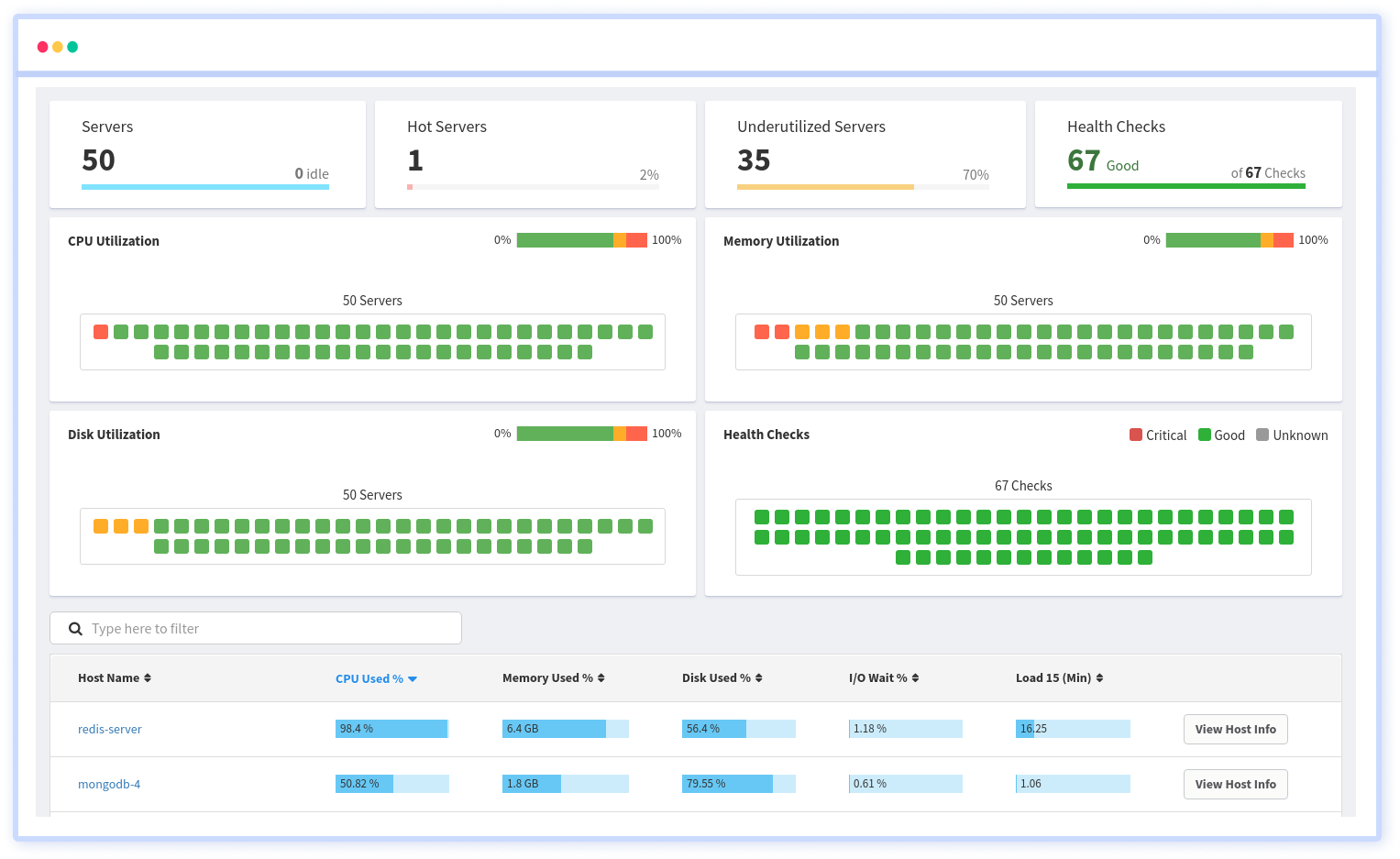
Atatus can be beneficial to your business, which provides a comprehensive view of your application, including how it works, where performance bottlenecks exist, which users are most impacted, and which errors break your code for your frontend, backend, and infrastructure.

